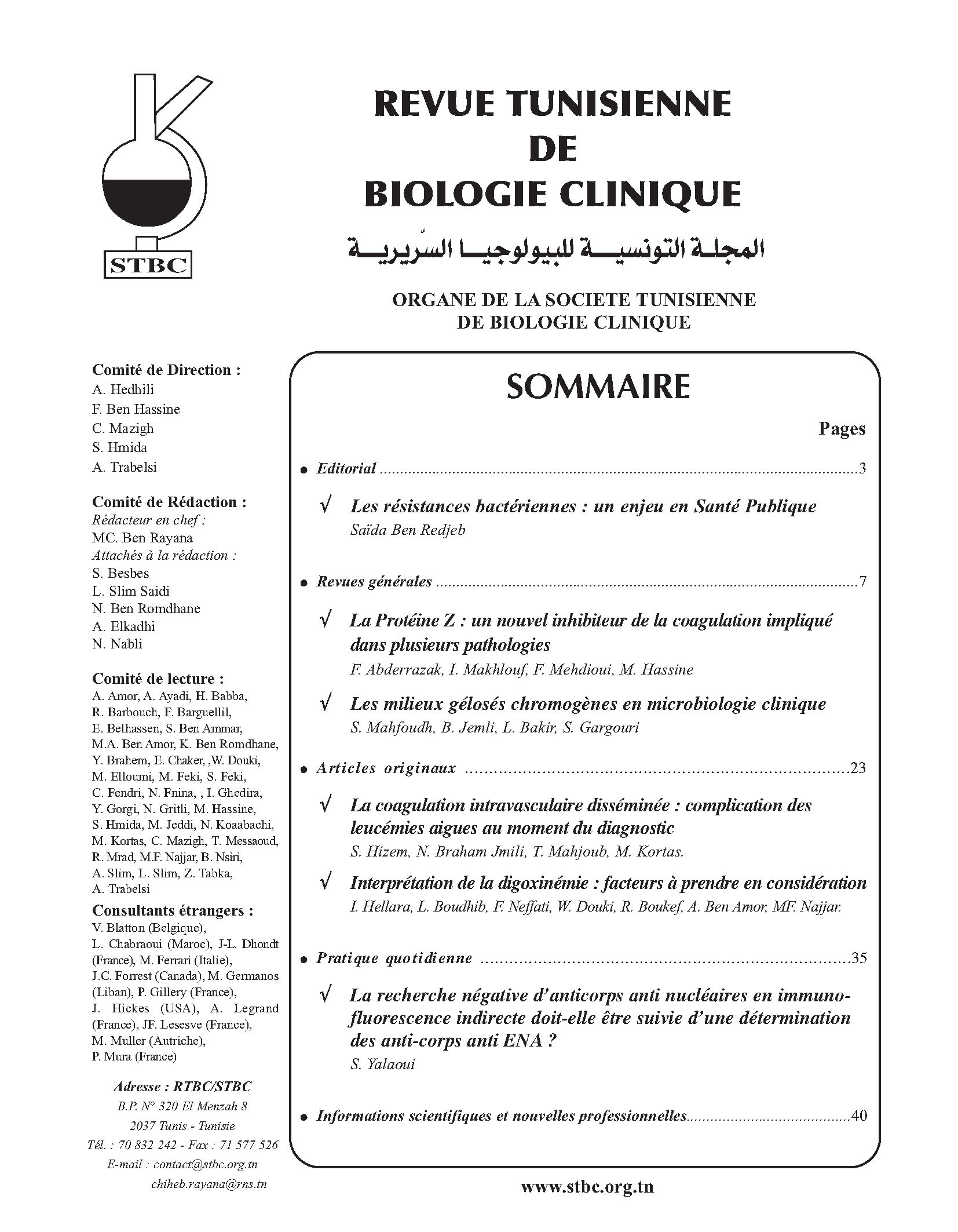Résumé
La digoxine est un cardiotrope à marge thérapeutique étroite pou-vant induire des intoxications digitaliques graves. L’objectif de notre travail est d’étudier l’implication de facteurs physiologiques, pathologiques et théra-peutiques dans l’augmentation de la digoxinémie. Il s’agit d’une étude pros-pective chez 113 patients âgés de 32 à 87 ans, traités par la digoxine, consul-tant pour présomption de surdosage. La digoxinémie est supérieure aux concentrations thérapeutiques chez 21,1% de nos patients, avec augmentation plus marquée chez les femmes et d’autant plus importante que la dose de digoxine hebdomadaire est élevée. La digoxinémie est plus élevée chez les sujets de plus de 60 ans (p < 0,02), ceux présentant une insuffisance cardiaque (p < 0,02) et ceux traités par d’autres médicaments à tropisme cardiovascu-laire associés à la digoxine : inhibiteurs de l’enzyme de conversion (IEC: p < 0,001), diurétiques (p < 0,01), amiodarone (p < 0,01), Vs les patients traités par la digoxine seule. Lorsque d’autres médicaments administrés chez nos patients (β bloquants, diurétiques, AINS ou diltiazem) sont associés à un IEC en plus de la digoxine, les digoxinémies moyennes passent de 1,57 ± 1,84 à 2,69 ± 3,71 µg/L. Dans le cas où ces médicaments sont associés à l’amiodarone et à la digoxine, les digoxinémies moyennes passent de 1,69 ± 1,32 à 4,08 ± 3,60 µg/L. Pour les digoxinémies élevées, l’interprétation devrait prendre en considération l’âge, le sexe, la posologie, l’existence d’une insuffisance cardiaque, et le traitement par les IEC et l’amiodarone.

Ce travail est disponible sous la licence Creative Commons Attribution 4.0 International .
(c) Tous droits réservés I. HELLARA, L. BOUDHIB, F. NEFFATI, W. DOUKI, R. BOUKEF, A. BEN AMOR, MF. NAJJAR 2023


